Terry Teachout's Blog, page 226
June 28, 2011
TT: Almanac
"Whatever may be said in favour of the Victorians, it is pretty generally admitted that few of them were to be trusted within reach of a trowel and a pile of bricks."
P.G. Wodehouse, Summer Moonshine
P.G. Wodehouse, Summer Moonshine
Published on June 28, 2011 20:17
TT: Snapshot (special Bernard Herrmann centennial edition)
"Music for the Movies:
Bernard Herrmann
," a 1992 documentary narrated by Philip Bosco:
(This is the latest in a weekly series of arts-related videos that appear in this space each Wednesday.)
(This is the latest in a weekly series of arts-related videos that appear in this space each Wednesday.)
Published on June 28, 2011 20:17
June 27, 2011
TT: Almanac
"How hard it is, in literary criticism, to find words of praise. There are infinite gradations of blame, a thousand fresh and pungent metaphors for detraction, the epithets of dissatisfaction seem never to stale (perhaps that is why contemporary writings, and particularly contemporary essays, are usually noticeable only when they are abusive), but the moment one finds a work which genuinely impresses and delights, there seems no article of expression other than the clichés that grin at one from every publisher's advertisement."
Evelyn Waugh, "Art from Anarchy" (Night and Day, Sept. 16, 1937)
Evelyn Waugh, "Art from Anarchy" (Night and Day, Sept. 16, 1937)
Published on June 27, 2011 20:17
TT: Travels with Mrs. T (I)
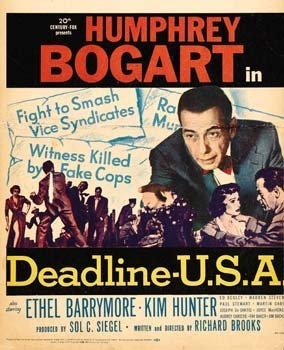 FRIDAY Up at eight to pack for an afternoon flight out of Hartford, whose airport is an hour's drive from our place in the Connecticut woods. Mrs. T is a sleep-late-then-pack-fast kind of gal, whereas I have obsessive travel-related tendencies reinforced by years and years of making deadlines. Whenever two such folk set up house together, it necessarily leads to a certain amount of tension, albeit of a productive kind: Mrs. T and I get everywhere on time, then relax and enjoy ourselves. The only friction occurs in the frenzied hour just before we hit the road, during which glares and harsh words are exchanged, followed by an on-time departure (though never a minute early!) and profuse apologies.
FRIDAY Up at eight to pack for an afternoon flight out of Hartford, whose airport is an hour's drive from our place in the Connecticut woods. Mrs. T is a sleep-late-then-pack-fast kind of gal, whereas I have obsessive travel-related tendencies reinforced by years and years of making deadlines. Whenever two such folk set up house together, it necessarily leads to a certain amount of tension, albeit of a productive kind: Mrs. T and I get everywhere on time, then relax and enjoy ourselves. The only friction occurs in the frenzied hour just before we hit the road, during which glares and harsh words are exchanged, followed by an on-time departure (though never a minute early!) and profuse apologies.It took us well over an hour to drive from Pittsburgh International Airport to our downtown hotel. Nobody told us that President Obama was giving a speech in Pittsburgh that day, or that the Secret Service was planning to seal off the main road into town. Miranda, our trusty GPS, got us to the hotel via a circuitous alternate route, but a whole lot of other people must have decided to take the same route, since it, too, was jammed. Fortunately, Richard Strauss' seraphically genial oboe concerto was playing on the radio and the University Center Holiday Inn has superior room service, so no one got killed or maimed.
 SATURDAY We slept in, then lunched at
Essie's Original Hot Dog Shop
, popularly known as the Dirty O, which is famous for serving you what you think are more French fries than you can possibly eat--until you try one. Said Mrs. T: "These are the best fries I've ever had!" As for the main course, I can do no better than cite Paul Lukas' 2002
survey
of America's top dogs:
SATURDAY We slept in, then lunched at
Essie's Original Hot Dog Shop
, popularly known as the Dirty O, which is famous for serving you what you think are more French fries than you can possibly eat--until you try one. Said Mrs. T: "These are the best fries I've ever had!" As for the main course, I can do no better than cite Paul Lukas' 2002
survey
of America's top dogs:While the Steel City's dogs have no regional quirks, the Original's griddle-grilled beauties have one thing going for them: flavor. The franks' tight skins snap as you bite into them, resulting in an explosion of beefy goodness. This is not just a great hot dog; this is a great piece of meat. And happily, although I do not get to Pittsburgh as often as I would like, my standard order at the Original is one I have had lots of practice delivering elsewhere: "Gimme two, with mustard."
He forgot the chili, but otherwise that's a recipe for bliss. (Don't forget to specify brown mustard--it's the finishing touch.)
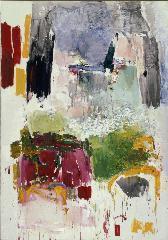 After lunch we went to the
Carnegie Museum of Art
, one of the country's finest second-tier encyclopedic museums. While it can't rival Fort Worth's Kimbell or the old Cleveland Museum for sheer consistency, the Carnegie contains its share of show-stoppers. I think that
Rocks at the Seashore
, a breathtaking early Cézanne, was my favorite piece, with Joan Mitchell's Low Water (Mrs. T's pick) running it a close second. But there was plenty of competition, including a first-class Chardin
still life
and an astonishingly vivid
portrait
by Whistler of the great Spanish violinist Pablo de Sarasate.
After lunch we went to the
Carnegie Museum of Art
, one of the country's finest second-tier encyclopedic museums. While it can't rival Fort Worth's Kimbell or the old Cleveland Museum for sheer consistency, the Carnegie contains its share of show-stoppers. I think that
Rocks at the Seashore
, a breathtaking early Cézanne, was my favorite piece, with Joan Mitchell's Low Water (Mrs. T's pick) running it a close second. But there was plenty of competition, including a first-class Chardin
still life
and an astonishingly vivid
portrait
by Whistler of the great Spanish violinist Pablo de Sarasate.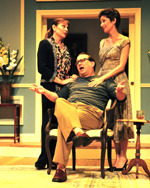 In the evening we paid our first visit to
Pittsburgh Irish and Classical Theatre
, a company that I've been meaning to check out for the past few seasons but was unable to shoehorn into my summer schedule until now. PICT is performing House & Garden, one of Alan Ayckbourn's conceptual extravaganzas, two plays which, like The Norman Conquests, take place in different parts of the same house but are designed to be performed simultaneously in adjacent theaters, with the members of the cast racing from stage to stage as needed. PICT, whose two stages are connected by a
spiral staircase
, is ideally suited to such an undertaking, so I decided that the time had finally come to spend a couple of nights in Pittsburgh.
In the evening we paid our first visit to
Pittsburgh Irish and Classical Theatre
, a company that I've been meaning to check out for the past few seasons but was unable to shoehorn into my summer schedule until now. PICT is performing House & Garden, one of Alan Ayckbourn's conceptual extravaganzas, two plays which, like The Norman Conquests, take place in different parts of the same house but are designed to be performed simultaneously in adjacent theaters, with the members of the cast racing from stage to stage as needed. PICT, whose two stages are connected by a
spiral staircase
, is ideally suited to such an undertaking, so I decided that the time had finally come to spend a couple of nights in Pittsburgh.This, needless to say, is one of the signal advantages of being the drama critic of The Wall Street Journal, which encourages me to criss-cross America in search of noteworthy shows to review. Were it not for the Journal's unique commitment to regional theater, I'd probably never have gotten a chance to see House & Garden. It was done in Chicago, Manhattan, and Rochester shortly after its 1999 premiere at Ayckbourn's own Stephen Joseph Theatre in Scarborough, but since then the only professional staging of which I've heard was by Dallas' Theatre Three in 2008.
(To be continued)
* * *
Pauline Oostenrijk, Neeme Järvi, and the Hague Philharmonic perform the first movement of Richard Strauss' Oboe Concerto, composed in 1945:
Published on June 27, 2011 20:17
TT: Never enough stuff
Somebody tweeted the other day about an essay of mine that appeared in a coffee-table book called
America at Home: A Close-Up Look at How We Live
that was published in 2008. I'd completely forgotten that I wrote this piece, and had to look it up in my electronic files to recall what it was about. I rather liked it on renewed acquaintance, and thought that you might feel the same way.
* * *
"Simplify, simplify," Henry David Thoreau exhorted us in Walden, in which he tells how he spent two years living in a hand-built one-room shack so as to free himself from the shackles of stuff. Me, I live in a small New York apartment whose walls are lined with eight hundred books, three thousand compact discs, and thirty-six lithographs, etchings, screenprints, woodcuts, and watercolors, and it's been five years since any of those numbers last trended downward. Middle-class Manhattanites typically live in close quarters, and I'm no exception: I keep my sauce pans in the oven and sleep in a loft. But that doesn't stop me from wedging more stuff into my Upper West Side home, whose neatness (for I am very neat) arises from the fact that my closets are so full that the only way I can cram something new into them is to throw out something old.
I am, in other words, a collector, and chances are that so are you. Most Americans are collectors, though some are more systematic about it than others. The works of modern American art that I own, for instance, are a collection in every sense of the word, so much so that a friend started referring to my apartment as "the Teachout Museum." Not that any of my pieces are priceless--I'm big on eBay--but they still amount to something more than a bunch of miscellaneous prints. That's how you know you've amassed a collection: the whole is greater than the sum of its parts, which is a polite way of saying that you own too damn much of something for any immediately obvious purpose. My father collected mugs--but why? What did he get out of looking at the shelves on which dozens of dusty mugs were arranged as carefully and lovingly as I now hang the prints by John Marin, Milton Avery, Hans Hofmann, and Fairfield Porter that grace the walls of my living room? It never occurred to me to ask him. The mugs were as much a part of him as his deep voice, and that was that.
Are we what we collect? Sometimes the answer is self-evident. Louis Armstrong and H.L. Mencken, who in every other way were utterly dissimilar, preserved every scrap of personal memorabilia they could squeeze into their multi-story homes. I once spent a rainy afternoon leafing through Mencken's old hospital bills. Both men, in essence, collected themselves, and with good reason, since they were great artists through whose self-collections scholars now rummage in search of insight. But even those of us who have no like claim on posterity seem no less compelled to collect something, be it mugs, lithographs, recipes, stamps, matchbooks, or plastic handbags. And while I know two collectors who have gone so far as to rent apartments devoted solely to the storage and display of their collections, it seems in the nature of most Americans to want to keep their stuff closer to hand. Not a few of the finest museums in America began life as the private homes of wealthy art collectors.
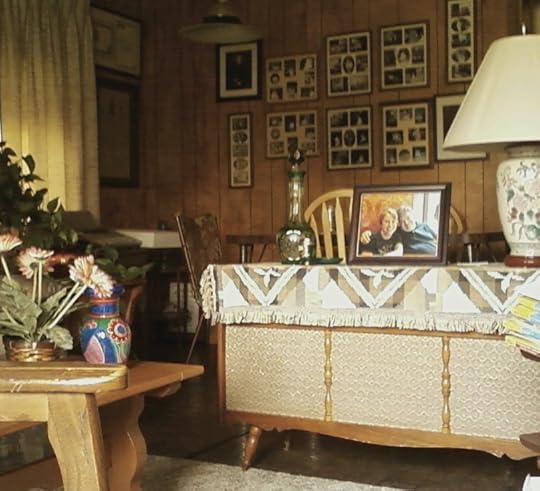 Might it be that the presence of a collection, whether humble or haute, is part of what makes a house a home? If so, then it might also be that we are all self-collectors, and that our collections are, in Alec Wilder's phrase, clues to a life. Perhaps my father, who spent the middle part of his life as a traveling salesman, had a story to go with each of his mugs. I know that each of the carefully framed family snapshots that hang on the walls of the house where he lived, and where my mother still lives, tells a little piece of the story of my family. They, too, are a collection, one of no value to anyone but my kinfolk, to whom they are as priceless as any of the Rembrandts hanging at the Met.
Might it be that the presence of a collection, whether humble or haute, is part of what makes a house a home? If so, then it might also be that we are all self-collectors, and that our collections are, in Alec Wilder's phrase, clues to a life. Perhaps my father, who spent the middle part of his life as a traveling salesman, had a story to go with each of his mugs. I know that each of the carefully framed family snapshots that hang on the walls of the house where he lived, and where my mother still lives, tells a little piece of the story of my family. They, too, are a collection, one of no value to anyone but my kinfolk, to whom they are as priceless as any of the Rembrandts hanging at the Met.
Needless to say, you can't take it with you, and so from time to time I make yet another virtuous but futile attempt to prune my shelves and clean out my closets. Frank Lloyd Wright, America's greatest domestic architect, was a passionate stuff-hater who actually went so far as to design houses that were intended to prevent their owners from piling up needless, life-complicating possessions. In my heart I know he was right, and that the accumulation of too much stuff is a drag on the spirit. Yet I still can't help but smile wryly when I remember that Kentuck Knob, one of Wright's most beautiful residences, was later purchased by a British baron who collects...houses.
* * *
"Simplify, simplify," Henry David Thoreau exhorted us in Walden, in which he tells how he spent two years living in a hand-built one-room shack so as to free himself from the shackles of stuff. Me, I live in a small New York apartment whose walls are lined with eight hundred books, three thousand compact discs, and thirty-six lithographs, etchings, screenprints, woodcuts, and watercolors, and it's been five years since any of those numbers last trended downward. Middle-class Manhattanites typically live in close quarters, and I'm no exception: I keep my sauce pans in the oven and sleep in a loft. But that doesn't stop me from wedging more stuff into my Upper West Side home, whose neatness (for I am very neat) arises from the fact that my closets are so full that the only way I can cram something new into them is to throw out something old.
I am, in other words, a collector, and chances are that so are you. Most Americans are collectors, though some are more systematic about it than others. The works of modern American art that I own, for instance, are a collection in every sense of the word, so much so that a friend started referring to my apartment as "the Teachout Museum." Not that any of my pieces are priceless--I'm big on eBay--but they still amount to something more than a bunch of miscellaneous prints. That's how you know you've amassed a collection: the whole is greater than the sum of its parts, which is a polite way of saying that you own too damn much of something for any immediately obvious purpose. My father collected mugs--but why? What did he get out of looking at the shelves on which dozens of dusty mugs were arranged as carefully and lovingly as I now hang the prints by John Marin, Milton Avery, Hans Hofmann, and Fairfield Porter that grace the walls of my living room? It never occurred to me to ask him. The mugs were as much a part of him as his deep voice, and that was that.
Are we what we collect? Sometimes the answer is self-evident. Louis Armstrong and H.L. Mencken, who in every other way were utterly dissimilar, preserved every scrap of personal memorabilia they could squeeze into their multi-story homes. I once spent a rainy afternoon leafing through Mencken's old hospital bills. Both men, in essence, collected themselves, and with good reason, since they were great artists through whose self-collections scholars now rummage in search of insight. But even those of us who have no like claim on posterity seem no less compelled to collect something, be it mugs, lithographs, recipes, stamps, matchbooks, or plastic handbags. And while I know two collectors who have gone so far as to rent apartments devoted solely to the storage and display of their collections, it seems in the nature of most Americans to want to keep their stuff closer to hand. Not a few of the finest museums in America began life as the private homes of wealthy art collectors.
 Might it be that the presence of a collection, whether humble or haute, is part of what makes a house a home? If so, then it might also be that we are all self-collectors, and that our collections are, in Alec Wilder's phrase, clues to a life. Perhaps my father, who spent the middle part of his life as a traveling salesman, had a story to go with each of his mugs. I know that each of the carefully framed family snapshots that hang on the walls of the house where he lived, and where my mother still lives, tells a little piece of the story of my family. They, too, are a collection, one of no value to anyone but my kinfolk, to whom they are as priceless as any of the Rembrandts hanging at the Met.
Might it be that the presence of a collection, whether humble or haute, is part of what makes a house a home? If so, then it might also be that we are all self-collectors, and that our collections are, in Alec Wilder's phrase, clues to a life. Perhaps my father, who spent the middle part of his life as a traveling salesman, had a story to go with each of his mugs. I know that each of the carefully framed family snapshots that hang on the walls of the house where he lived, and where my mother still lives, tells a little piece of the story of my family. They, too, are a collection, one of no value to anyone but my kinfolk, to whom they are as priceless as any of the Rembrandts hanging at the Met.Needless to say, you can't take it with you, and so from time to time I make yet another virtuous but futile attempt to prune my shelves and clean out my closets. Frank Lloyd Wright, America's greatest domestic architect, was a passionate stuff-hater who actually went so far as to design houses that were intended to prevent their owners from piling up needless, life-complicating possessions. In my heart I know he was right, and that the accumulation of too much stuff is a drag on the spirit. Yet I still can't help but smile wryly when I remember that Kentuck Knob, one of Wright's most beautiful residences, was later purchased by a British baron who collects...houses.
Published on June 27, 2011 05:00
TT: Almanac
"I am attracted only to music which I consider to be better than it can be performed. Therefore I feel (rightly or wrongly) that unless a piece of music presents a problem to me, a never-ending problem, it doesn't interest me too much."
Artur Schnabel, My Life and Music
Artur Schnabel, My Life and Music
Published on June 27, 2011 05:00
June 25, 2011
TT: Peter Falk, R.I.P.
I've never laughed harder in my life than I did when I first saw this scene from
The In-Laws
in 1979--and I bet you can guess which line did the job on me:
Published on June 25, 2011 00:54
June 23, 2011
TT: Almanac
"Always providing you have enough courage--or money--you can do without a reputation."
Margaret Mitchell, Gone With the Wind
Margaret Mitchell, Gone With the Wind
Published on June 23, 2011 14:13
TT: See me, hear me (cont'd)
I'm one of the panelists on the latest episode of Theater Talk, which will be telecast by CUNY-TV on Saturday at 8:30 p.m. ET (followed by several repeat airings). Joining me are fellow drama critics Adam Feldman, Jacques le Sourd, and Elisabeth Vincentelli. The hosts are Michael Riedel and Susan Haskins. We'll be talking about the Broadway season just ended, and I can promise you that the discussion, which we taped a few weeks ago, will be frisky.
For more information, go here .
If you want to watch it now, here's the complete episode:
For more information, go here .
If you want to watch it now, here's the complete episode:
Published on June 23, 2011 14:13
TT: Julie Taymor's complaint
The ex-director of Spider-Man: Turn Off the Dark is still making news, and the news she's making is the subject of my "Sightings" column in today's Wall Street Journal. Here's an excerpt.
* * *
Blame it on Twitter. So says Julie Taymor, who claims that she got fired from "Spider-Man: Turn Off the Dark" because unhappy audience members who saw the show in previews took to social media in droves to complain, spinning a web of negative buzz that ultimately led to her dismissal as the show's director.
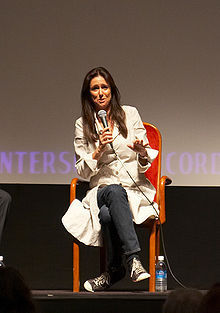 "Twitter and Facebook and blogging just trump you," Ms. Taymor said at a recent meeting of the Theater Communications Group. "When you're trying to create new work, and you're trying to break new ground and experiment, which seems an incredibly crazy thing to do in a Broadway environment, the immediate answers that audiences give are never going to be good." She added that the producers' decision to rewrite the book of "Spider-Man" based on the input of focus groups was a mistake: "It's very scary if people are going more towards that, to have audiences tell you how to make a show. Shakespeare would have been appalled."
"Twitter and Facebook and blogging just trump you," Ms. Taymor said at a recent meeting of the Theater Communications Group. "When you're trying to create new work, and you're trying to break new ground and experiment, which seems an incredibly crazy thing to do in a Broadway environment, the immediate answers that audiences give are never going to be good." She added that the producers' decision to rewrite the book of "Spider-Man" based on the input of focus groups was a mistake: "It's very scary if people are going more towards that, to have audiences tell you how to make a show. Shakespeare would have been appalled."
Ms. Taymor got one thing right: It's crazy to experiment on Broadway, especially if you're doing it with somebody else's $70 million. But the rest of her lament was alternately self-serving and ill-informed, as anyone familiar with the history of New York theater could--and should--have told her.
Let's start with the self-serving part. Ms. Taymor seems to think that her attempt to create a groundbreaking work of theatrical art was sabotaged by a horde of philistines who just didn't get it. Er, how's that again? "Spider-Man: Turn Off the Dark" was, and remains, a commodity musical about a comic-book character. No matter how well they're done, commodity musicals are not high art. Even if they're supremely artful, like Ms. Taymor's "The Lion King," they're still applause machines whose main function is to make pots of money for their backers.
As for the alleged culpability of social media, it's true that Twitter, Facebook, and the Broadway-oriented message boards have accelerated word of mouth to the speed of light. It's also true that innovative artistic ideas need time to be perfected--and to be assimilated by those who are seeing them for the first time. And social media definitely spread the word about the problems of "Spider-Man" early on, though much of the sharpest criticism was written not by furious fanboys but by thoughtful commentators who, like Chris Caggiano, author of the theater blog "Everything I Know I Learned From Musicals," are at least as smart as the best print-media critics.
All this notwithstanding, the truth is that Broadway hasn't been changed all that much by Twitter....
* * *
Read the whole thing here .
* * *
Blame it on Twitter. So says Julie Taymor, who claims that she got fired from "Spider-Man: Turn Off the Dark" because unhappy audience members who saw the show in previews took to social media in droves to complain, spinning a web of negative buzz that ultimately led to her dismissal as the show's director.
 "Twitter and Facebook and blogging just trump you," Ms. Taymor said at a recent meeting of the Theater Communications Group. "When you're trying to create new work, and you're trying to break new ground and experiment, which seems an incredibly crazy thing to do in a Broadway environment, the immediate answers that audiences give are never going to be good." She added that the producers' decision to rewrite the book of "Spider-Man" based on the input of focus groups was a mistake: "It's very scary if people are going more towards that, to have audiences tell you how to make a show. Shakespeare would have been appalled."
"Twitter and Facebook and blogging just trump you," Ms. Taymor said at a recent meeting of the Theater Communications Group. "When you're trying to create new work, and you're trying to break new ground and experiment, which seems an incredibly crazy thing to do in a Broadway environment, the immediate answers that audiences give are never going to be good." She added that the producers' decision to rewrite the book of "Spider-Man" based on the input of focus groups was a mistake: "It's very scary if people are going more towards that, to have audiences tell you how to make a show. Shakespeare would have been appalled."Ms. Taymor got one thing right: It's crazy to experiment on Broadway, especially if you're doing it with somebody else's $70 million. But the rest of her lament was alternately self-serving and ill-informed, as anyone familiar with the history of New York theater could--and should--have told her.
Let's start with the self-serving part. Ms. Taymor seems to think that her attempt to create a groundbreaking work of theatrical art was sabotaged by a horde of philistines who just didn't get it. Er, how's that again? "Spider-Man: Turn Off the Dark" was, and remains, a commodity musical about a comic-book character. No matter how well they're done, commodity musicals are not high art. Even if they're supremely artful, like Ms. Taymor's "The Lion King," they're still applause machines whose main function is to make pots of money for their backers.
As for the alleged culpability of social media, it's true that Twitter, Facebook, and the Broadway-oriented message boards have accelerated word of mouth to the speed of light. It's also true that innovative artistic ideas need time to be perfected--and to be assimilated by those who are seeing them for the first time. And social media definitely spread the word about the problems of "Spider-Man" early on, though much of the sharpest criticism was written not by furious fanboys but by thoughtful commentators who, like Chris Caggiano, author of the theater blog "Everything I Know I Learned From Musicals," are at least as smart as the best print-media critics.
All this notwithstanding, the truth is that Broadway hasn't been changed all that much by Twitter....
* * *
Read the whole thing here .
Published on June 23, 2011 14:13
Terry Teachout's Blog
- Terry Teachout's profile
- 45 followers
Terry Teachout isn't a Goodreads Author
(yet),
but they
do have a blog,
so here are some recent posts imported from
their feed.



